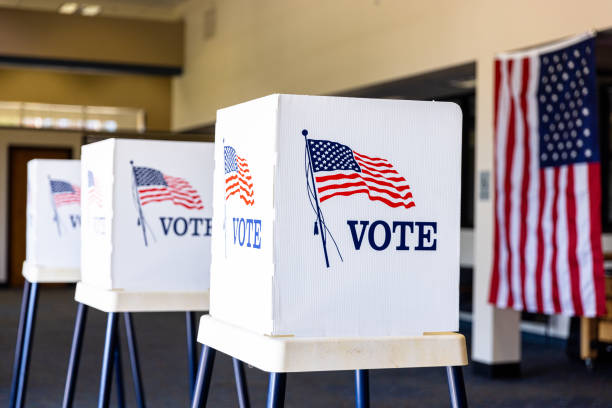The time has come with the much anticipated interest rate cut by the Federal Reserve Bank, and Wednesday’s announcement brought some joy to the market and also a measure of relief from American consumers, the drivers of the US economy; but, that joy has to be tempered as it will take at least six months for the effects to be seen.
One important aspect to be acknowledged is that Chair Jerome Powell has kept a steady hand on the tiller as he balanced the rocky ocean of post pandemic economics, sexton in hand, as he calibrated the interest rates from their near history making zero to one of, gasp, 50; and, which the data shows was relevant, as he noted at the recent Federal Open Market Committee meeting in Jackson Hole, Wyoming.
While we have said in previous posts, that Powell is a self identified data driven chair, he was often not believed, but this announcement should cement that in the minds of Wall Street, as well as Main Street.
50 basis point is a lot to some, but after seeing the latest CPI date, an inflationary measure, the downward drop of inflation to 0.2 in August meets the mandate of the Fed to 2 percent inflation
The other is full employment, and while there were some naysayers who panicked at the August unemployment rate which increased from July at 4.2 to 4.3 in August, but it was bound to eventually come down after post pandemic highs, and it was not a crash landing, but a soft landing that was previously scoffed at by some economists and lawmakers, but now seems apparent.
That, in and of itself, has prompted strong reactions:
“This is a bit of a surprise. The 50 [basis point] cut suggests an abrupt switch of focus back to the maximum employment mandate and a very sharp improvement in confidence in inflation progress in the last month and a half,” Brian Coulton, chief economist at Fitch Ratings, said in a reported commentary.
The Hill stated, “While some economists believe the Fed could have started cutting rates in July, the next few months are critical as the central bank attempts to bring the economy in for a “soft landing,” maintaining its dual mandate of low inflation and maximum employment as it brings down rates.”
Politically, it also has helped President Biden, even in his waning days, who had said in earlier comments that the increasing inflation was only “transitory.”
Democratic presidential candidate and Vice President Kamala Harris issued a statement where she clarified that this action by the Fed was not the end of the road for inflation, and said, “while this announcement is welcome news for Americans who have born the brunt of high prices, my focus is on the work ahead to keep bringing prices down.”
Politics is a strange bedfellow, and while the Federal Reserve has always maintained its independence from the White House and Congress, it's also sparked alarm and drew dire warnings from lawmakers such as Elizabeth Warren, if the cuts were not taken.
“The uptick in unemployment and consumer-friendly CPI reading sparked concerns and renewed criticisms that the Fed may be behind on interest rate cuts, with Sens. Elizabeth Warren (D-Mass.), Sheldon Whitehouse (D-R.I.) and John Hickenlooper (D-Colo.) arguing in a Monday letter to Powell that the central bank’s “delays have threatened the economy and left the Fed behind the curve,” according to The Hill.
Warren, along with Sens. Whitehouse and Hickenlooper, also "pressed Powell on Monday to cut rates by 75 basis points, a highly unlikely move that exceeds the 50 basis point cut forecasted by most interest rate traders, according to the CME FedWatch tool,” added their report.
“It is clearly the time for the Fed to cut rates. In fact, it may be too late: your delays have threatened the economy and left the Fed behind the curve,” the lawmakers wrote.
They are not alone, and there are many others that feel the same way, despite this good news, that the Fed was behind the curve of inflation, and to that Powell has retorted, “We don’t think we’re behind,” he said. “We think this is timely, but I think you can take this as a sign of our commitment not to get behind.”
A 75 basis point cut would have been impossible, according to other economists, giving the sense that the Fed was admitting that they were wrong, or were behind the curve; and, the markets would have gone crazy; and, also does not want to give even a scintilla of support for political operatives, on other side of the aisle.
What was not evident, and is largely assumed, is that the Fed may have been concerned about the labor market and wanted to get ahead of the possibility of either a weakened labor pool, or one that could be too strong in months to come.
Earlier remarks posited that employers were hoarding employees and keeping them on the payroll to avoid bringing them back at even higher wages in anticipation of an economic comeback, but as we all learned on standardized tests, “there are no penalties for guessing.”
It’s not over, note some observers and have said “This would only be the first cut of a rate-cutting cycle. The size and frequency of future cuts will give us a better understanding of whether the Fed believes they are behind, or ahead of, ‘the curve,’” said Jonathan Ernest, an economics professor at Case Western Reserve University.


